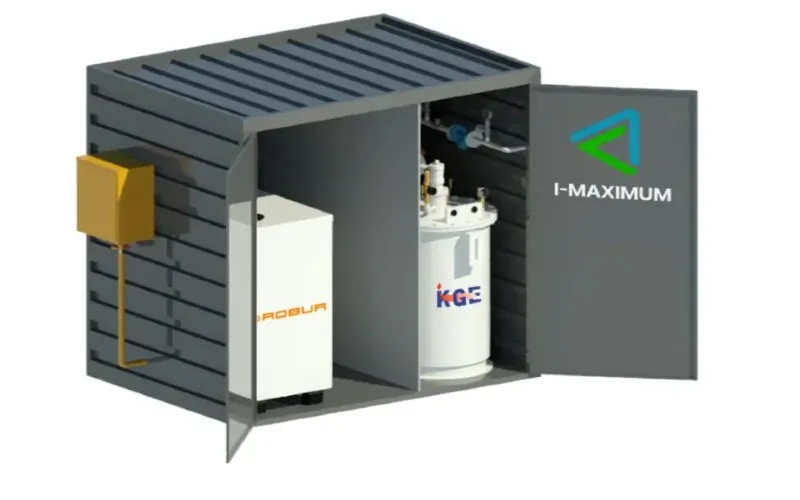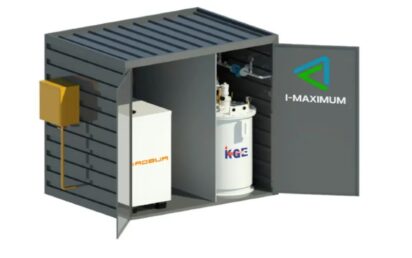Autonomous gas supply is a system in which gas for households, farms, or enterprises is supplied not from the main gas pipeline, but from independent reservoirs – cylinders and gas holders. Gas in the reservoirs is stored in a liquefied state, which allows you to have a sufficient supply in relatively small containers. If you are looking for a reliable gas equipment company, then this article is for you.
Autonomous Gas Supply – Fuel Used
Autonomous gas supply systems use liquefied petroleum gasses (LPG) – propane, butane, and their mixture, as well as liquid methane and liquefied natural gas (LNG).
Propane and butane are convenient because they are easily liquefied and stored at normal temperature and relatively low (no more than 1.6 MPa) pressure, and also easily evaporate, turning into a gaseous state. Butane liquefies at a lower pressure than propane, but its evaporation stops at a temperature slightly below zero, which creates certain, but quite solvable problems in the winter. With pure propane, such difficulties do not arise at all, but it is somewhat more expensive than butane or a propane-butane mixture.
Methane is the main component of natural gas. Methane is formed during many chemical and biological processes, accompanies oil and coal, and is the cheapest of the hydrocarbon gasses. Methane does not liquefy under compression at normal temperatures, but at -160°C it turns into a liquid at normal pressure. The production, transportation, and storage of liquid methane and liquefied natural gas (LNG) requires special equipment capable of maintaining such low temperatures and operating at them.
Extremely high requirements are imposed on equipment operating at such low temperatures, which inevitably affects its cost, and storing liquefied gas at a pressure of 16 atmospheres is much easier than at a temperature of -160°C. Therefore, propane and butane (LPG) are used for autonomous gasification of private houses, plots, farms, and small and medium-sized enterprises, and liquid methane and liquefied natural gas (LNG) are used only in large-scale production and gas power plants, where high costs for equipment and storage are offset by lower fuel prices.
Methods of Organizing Autonomous Gasification
Depending on the need for liquefied gas and the methods of its use, different types of containers are used for its storage, which include
- portable gas cylinders;
- gas cylinder installations;
- ground gas holders;
- underground gas holders;
- mobile gas holders on car trailers.
Portable Cylinders
Portable cylinders with liquid propane or propane-butane mixture are used for a kitchen gas stove, gas fireplace or convector, or gas water heater, to which they are connected using a simple reducer that reduces and regulates the gas pressure. When the gas in the cylinder runs out, it is taken to a gas filling station (GFS), where it is refilled with LPG for reuse.
Gas Cylinder Installations
A more convenient design is a gas cylinder installation that combines two or more cylinders. The cylinders in it are divided into two so-called shoulders, switching between which is carried out manually or automatically. This makes it possible to replace and fill empty cylinders without interrupting the gas supply. Gas cylinder installations have a large resource and are capable of providing not only a gas stove or water heater but also a heating boiler and a gas-electric generator for the heat and electricity supply of a small house or cottage.
Above-Ground And Underground Gas Holders
A gas holder is a large container for liquefied gas, installed permanently. The volume of a gas holder is from one to ten or more cubic meters, and it is filled using a gas tanker truck. If necessary, several gas holders can be connected to the system.
Above-ground gas holders are installed horizontally or vertically. Vertical installation allows not only to save space but also more easily solves the problem of non-evaporation of the butane component of LPG at sub-zero temperatures. As propane is withdrawn, butane, the remaining liquid, accumulates at the bottom of the gas holder and is fed to the evaporator, where it turns into gas under the influence of heat.
An underground gas holder allows you to solve the problem of butane not evaporating more effectively. At low temperatures, the ground does not freeze to a depth of more than a meter, and the temperature in the underground gas holder remains positive throughout the year. An underground gas holder is somewhat more expensive due to the cost of excavation work and anti-corrosion protection, but these costs pay off within a few years.
Mobile Gas Holders
Mobile gas holders are a compromise solution that combines the advantages of portable cylinders and stationary gas holders. A mobile gas holder is a 500-1000 liter liquefied gas tank mounted on a small trailer.
Equipment Used in Autonomous Gas Supply Systems
In addition to gas tanks, gas pipelines and switching elements, autonomous gas supply systems also use other equipment.
Gas Reducers
Gas reducers reduce the vapor pressure of liquefied hydrocarbon gas, which is usually about 1.5 MPa, to a pressure acceptable for the operation of gas appliances – 3-5 kPa. In the simplest designs, for example, in reducers connecting a gas cylinder to a gas stove, this process occurs in one stage, and in more complex designs – in two stages, during which high pressure is first reduced to medium pressure, which is about 0.1 MPa, and then to low pressure.
Vaporizers
Vaporizers are used not only for evaporating liquid butane at sub-zero temperatures but also to increase the productivity of the gas tank. Their operating principle is simple and is based on the use of heaters, but the use of vaporizers allows for a many-fold increase in the rate of formation of the vapor phase when natural evaporation is insufficient.
Protective And Emergency Systems
Protective systems include various types of valves that automatically release pressure or shut off the gas supply in abnormal and emergency situations, as well as pressure control systems, system tightness, and alarms.
Wrapping It Up
Autonomous gas supply is an effective solution for ensuring energy independence of facilities remote from centralized networks. Features of autonomous systems, such as the ability to use liquefied gas, and their flexibility and reliability, make them attractive for both private households and industrial enterprises. With proper design and maintenance, autonomous gas supply provides a high degree of comfort and safety, being a sustainable alternative to traditional energy sources. If you are looking for a reliable gas equipment firm, in particular for installing an LPG vaporizer, we recommend paying attention to I-Maximum, a gas equipment supplier that cooperates with Korea Gas Engineering to sell gas equipment.


